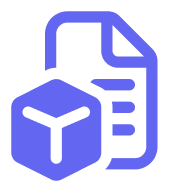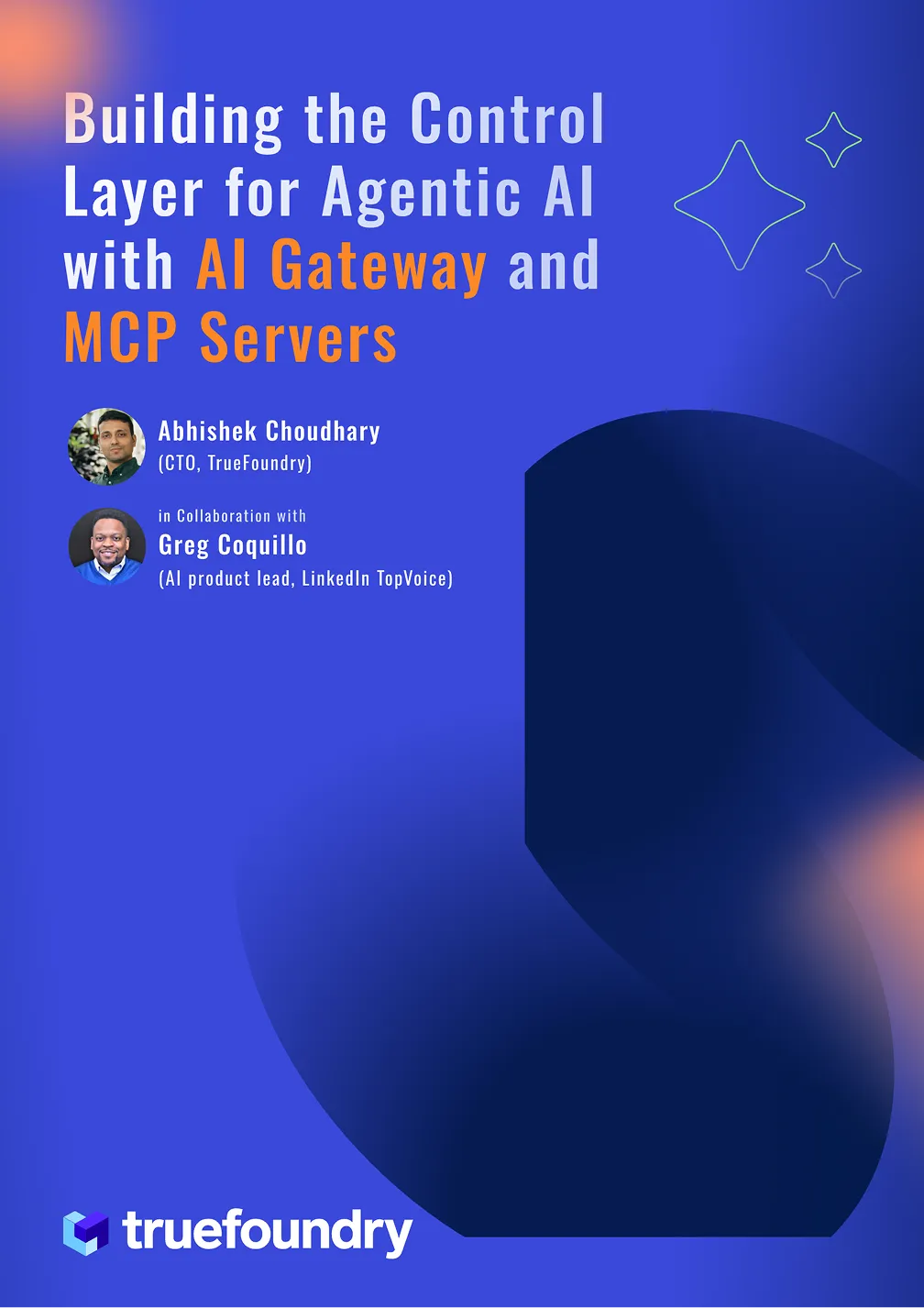What is LLM Gateway?
Large Language Models (LLMs) like GPT-4, Claude, and LLaMA have become powerful engines behind modern AI applications, chatbots, copilots, knowledge assistants, and more. But while these models open up incredible possibilities, integrating them into real-world applications is far from simple.
Every LLM provider comes with its own API, rate limits, cost models, and quirks. Developers often find themselves writing custom code for each provider, duplicating effort, and dealing with the risk of vendor lock-in. For enterprises, this complexity multiplies as they need compliance, observability, and governance across multiple AI systems.
That’s where an LLM Gateway comes in. Much like an API gateway in traditional software architecture, an LLM gateway acts as a middleware layer that abstracts away the complexity of working with multiple LLMs. It provides a single entry point to interact with different models, enforce policies, and route traffic intelligently.
In this article, we’ll break down what an LLM gateway is, the challenges it solves, its key features, and why it is becoming essential for building production-ready AI applications.
The Challenges Without an LLM Gateway
Before diving into gateways, it’s important to understand the pain points of integrating directly with LLM APIs:
- Vendor Lock-in
When you integrate directly with one provider, say OpenAI, your entire system becomes tightly coupled with their API. If prices rise, performance drops, or compliance requirements change, migrating to another LLM becomes costly and time-consuming. - API Fragmentation
Each LLM provider defines requests and responses differently. For example, OpenAI uses one structure for chat completion, Anthropic uses another, and open-source models running on Hugging Face or vLLM add their own quirks. This fragmentation forces developers to write and maintain multiple connectors. - Scalability Issues
Applications that want to use multiple LLMs : say, one for summarization and another for reasoning, struggle to coordinate across APIs. Scaling such systems means managing parallel integrations, custom load balancing, and fallback logic. - Security & Compliance Risks
Enterprises need to control sensitive data flowing through LLMs. Without a gateway, every integration has to be audited separately, making governance expensive and error-prone. - Operational Overhead
Monitoring usage, optimizing cost, and debugging issues across different LLMs becomes a nightmare when everything is scattered across direct APIs.
What is an LLM Gateway?
An LLM Gateway is a middleware layer that sits between your application and multiple LLM providers.
Think of it as a translator and traffic controller for AI models:
- Your application sends a request to the gateway.
- The gateway decides which LLM to use, based on cost, performance, or policy.
- It standardizes input/output formats so your application code doesn’t change.
Just like an API gateway provides a unified way to manage REST/GraphQL services, an LLM gateway provides a single integration point for AI models.
Core Concept:
- Abstraction Layer → Hide provider-specific quirks.
- Unified Interface → One API for multiple models.
- Policy Enforcement → Security, rate limiting, compliance.
- Orchestration → Smart routing, chaining, and fallback.
Key Features of an LLM Gateway
- Model Abstraction
The gateway provides a standard API, so switching from GPT-4 to Claude or to a self-hosted LLaMA doesn’t require rewriting your application code. - Routing & Orchestration
Intelligent routing allows requests to be sent to the most suitable model. For example:- Route quick summarization tasks to a cheaper model.
- Route complex reasoning tasks to a more advanced model.
It can also chain models together for workflows (e.g., retrieval + reasoning).
- Security
Enterprises can enforce authentication, redact sensitive information, and monitor data flow, all through the gateway. - Monitoring & Observability
The gateway provides detailed metrics like latency, token usage, error rates, and model performance across providers. - Cost Optimization
By dynamically routing to cheaper models for simpler tasks, organizations can significantly reduce expenses while maintaining performance. - Customization & Extensions
Many gateways allow developers to plug in prompt templates, caching mechanisms, and fine-tuned models for faster and more consistent results.
Benefits of Using an LLM Gateway
- Faster Integration → Write once, connect to many models.
- Flexibility → Switch providers or mix-and-match without re-engineering.
- Reliability → Failover and fallback reduce downtime when a provider is unavailable.
- Governance → Centralized logging, monitoring, and compliance.
- Lower Costs → Optimize routing to avoid unnecessary usage of expensive LLMs.
- Future-Proofing → Stay adaptable as new LLMs and modalities emerge.
LLM Gateway vs Direct API Integration
Verdict: While direct integration may work for small projects, enterprises and production-scale applications benefit greatly from an LLM gateway.
LLM Gateway Use Cases
- Multi-LLM Applications
AI copilots or chatbots that dynamically select the best model for different tasks. - Enterprises Requiring Compliance
Banks, healthcare companies, and governments can enforce policies centrally. - Startups Experimenting with Models
Quickly A/B test different providers without rewriting integrations. - Cost-Sensitive Applications
Route non-critical queries to cheaper models while reserving premium models for high-value tasks. - AI Orchestration in Production
Gateways can combine RAG (retrieval-augmented generation), reasoning, and fine-tuned workflows into one seamless pipeline.
Popular LLM Gateway Solutions
- Open-Source Gateways
- LangChain → Offers model abstraction and orchestration capabilities.
- LMQL → Provides a query language for structured interaction with LLMs.
- Commercial Gateways
- TrueFoundry → Full-fledged LLM gateway with monitoring, routing, and security.
- KongAI → API gateway extended with AI integration features.
- Cloud-Native Options
- Managed services from cloud providers (AWS, GCP, Azure) that integrate LLM routing.
Best Practices for Implementing an LLM Gateway
- Adopt Abstraction Early
Don’t tightly couple applications with a single LLM API. Use gateways from the start. - Enable Monitoring & Cost Tracking
Keep track of token usage and provider costs. - Prioritize Security
Use encryption, redact sensitive inputs, and apply role-based access controls. - Benchmark Regularly
Continuously test providers to ensure the best balance of cost and performance. - Align with Governance
Ensure compliance with data privacy regulations and internal audit requirements.
Future of LLM Gateways
- Standardization
Expect a convergence toward common interfaces for LLMs, driven by gateways. - Multi-Modal Support
Future gateways won’t just handle text, they’ll integrate vision, audio, and video models. - Enterprise AI Governance
LLM gateways will evolve into platforms that enforce policies, ethics, and accountability. - Agent Ecosystem
As AI agents become mainstream, gateways will orchestrate not just models but also tool usage and reasoning flows.
Conclusion
The rise of LLMs has transformed how we build AI applications, but direct integration with providers creates complexity, vendor lock-in, and operational challenges. An LLM Gateway solves these issues by acting as a unified, intelligent middleware layer that abstracts, secures, and optimizes model usage.
For developers, it means less time spent on boilerplate integrations. For enterprises, it means governance, compliance, and cost control. For the AI ecosystem, it’s the foundation that allows scalable, multi-model, and future-proof adoption.
As AI continues to evolve, the LLM Gateway is no longer just an optional tool, it’s becoming the backbone of enterprise AI infrastructure.
Built for Speed: ~10ms Latency, Even Under Load
Blazingly fast way to build, track and deploy your models!
- Handles 350+ RPS on just 1 vCPU — no tuning needed
- Production-ready with full enterprise support
TrueFoundry AI Gateway delivers ~3–4 ms latency, handles 350+ RPS on 1 vCPU, scales horizontally with ease, and is production-ready, while LiteLLM suffers from high latency, struggles beyond moderate RPS, lacks built-in scaling, and is best for light or prototype workloads.










.png)












